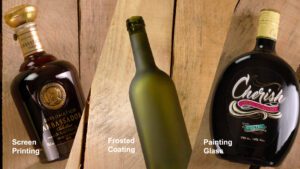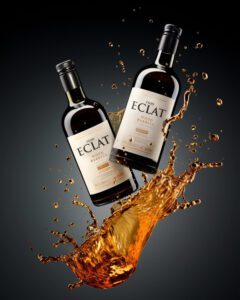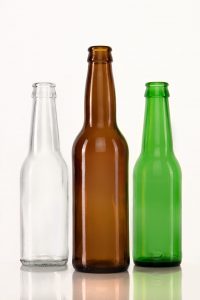White Glass and Flint Glass: A Comparison


What Is Optiwhite Glass?
Optiwhite glass is a pure white kind of float glass. The designation “Optiwhite” is only a brand name; white glass might equally be used. This contrasts with standard float glass, which has a distinctive green tinge that’s most noticeable at the cut edge.
How is white glass made? To be sure, Optiwhite glass contains only about 1% iron oxide. In the raw, on the other hand, iron oxide displays a greenish sheen when illuminated. Due to the low iron oxide level, the green shimmer is greatly decreased. On the glass edge, just a faint blue tinge remains — even white glass is never fully colorless.
Whether you call it Optiwhite glass, clear glass or white glass, the reality is that transparent glass is an excellent choice for attractive product display. Additionally, it is helpful that the glass thickness of many goods can be adjusted freely — the concept of made-to-measure glass enables the implementation of a broad range of design ideas.
What Is Flint Glass?
Flint glass is a form of optical glass that’s very transparent and has a high refractive index. Flint glass began in the 1600s when powdered flint was added to enhance the quality of blown glass. Additionally, it’s a term used to refer to particular kinds of pressed glass dishware that was produced in England and the United States between 1820 and 1865.
In 1662, English glassmaker and industrialist George Ravenscroft invented the first real flint glass. He employed flint particles to create a highly refractive and polished sort of glass. Flint glass was the gold standard for glassmaking technique until lead was found to make a considerably better glass when added to the silica mixture. Although today it’s more correctly referred to as “lead” glass, “flint glass” is still widely used.
Flint glassware may be transparent, or translucent and opaque in any hue. Scalloped or smooth edges are available, as are patterns including flowers, birds, grape leaves, historical dates, public structures and memorial sayings. Another popular style sees geometric forms resembling cut glass crystals.
Key Statistics on Glass Recycling
- Glass bottles and jars are fully recyclable. They can be recycled indefinitely without compromising their purity or quality.
- According to the United States Environmental Protection Agency, 39.6% of beer and soft drink bottles were collected in 2018 for recycling. 39.8% of wine and liquor bottles, and 15% of food and other glass jars were recycled. 33.1% of all glass food and beverage containers were recycled in total.
- Each year, the container and fiberglass industries acquire 3.35 million tons of recycled glass, which is melted and reused to manufacture new containers and fiberglass goods. (Sources: Precision Consulting and NAIMA)
- Each ton of recycled glass conserves over a ton of natural resources.
- Energy costs decrease by about 2-3% for every 10% of cullet (recycled glass) utilized in the production process.
- One ton of carbon dioxide is saved for every six tons of recycled container glass used in the manufacturing process.
- Beverage container deposit systems generate 11 to 38 times the number of direct jobs as curbside beverage container recycling systems. (Source: The Container Recycling Institute, Returning to Work: Assessing the Employment Impacts of Various Methods of Beverage Container Recycling).
- Around 18% of drinks are drunk on-premise at bars, restaurants and hotels. Glass accounts for almost 80% of this container mix.
- Over the last three decades, glass bottles have lost nearly 40% of their weight.
- Up to 95% of raw materials are replaced with recycled glass.
- Recycling 1,000 tons of glass results in creating at least eight jobs (Source: Container Recycling Institute)
- For more information on white glass, flint glass and glass recycling visit bpsglass.com or call us in South Florida at +1 470 864 3065. +1 470 864 3065.



